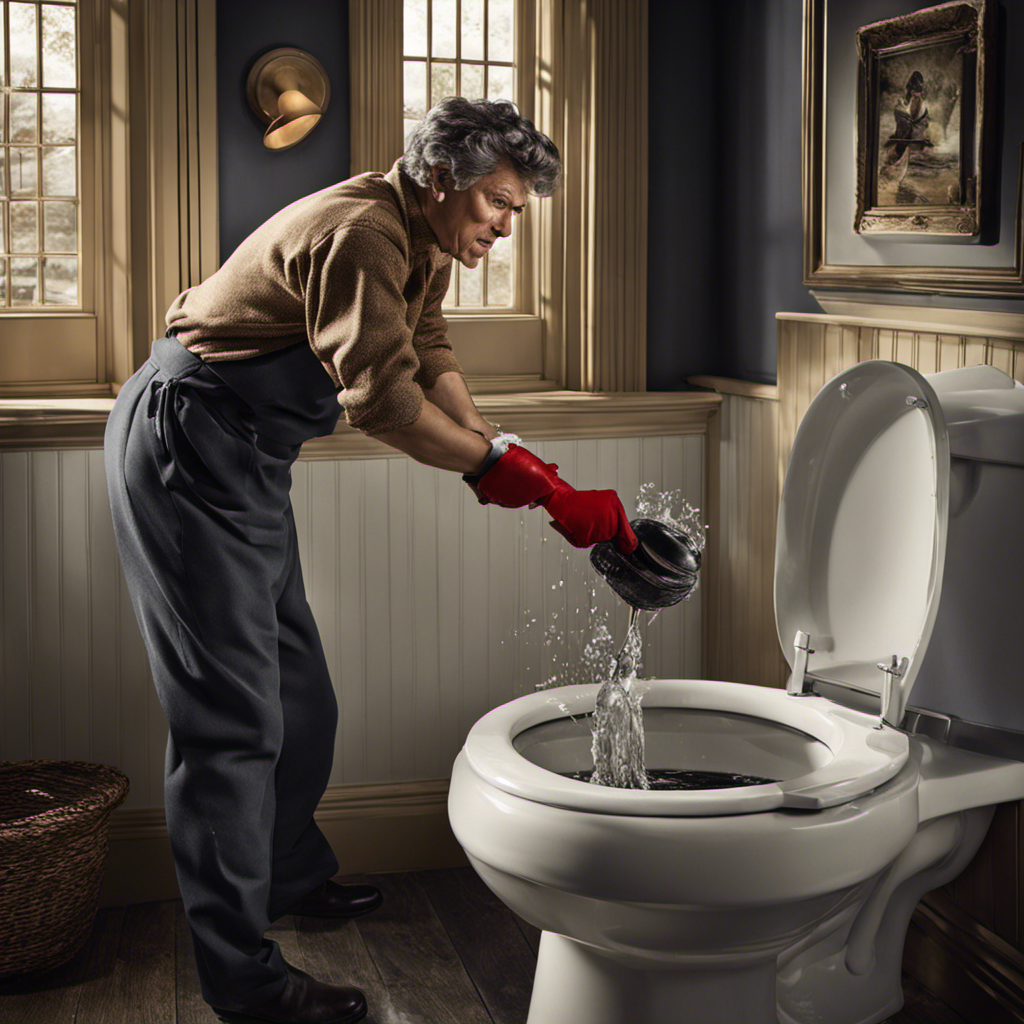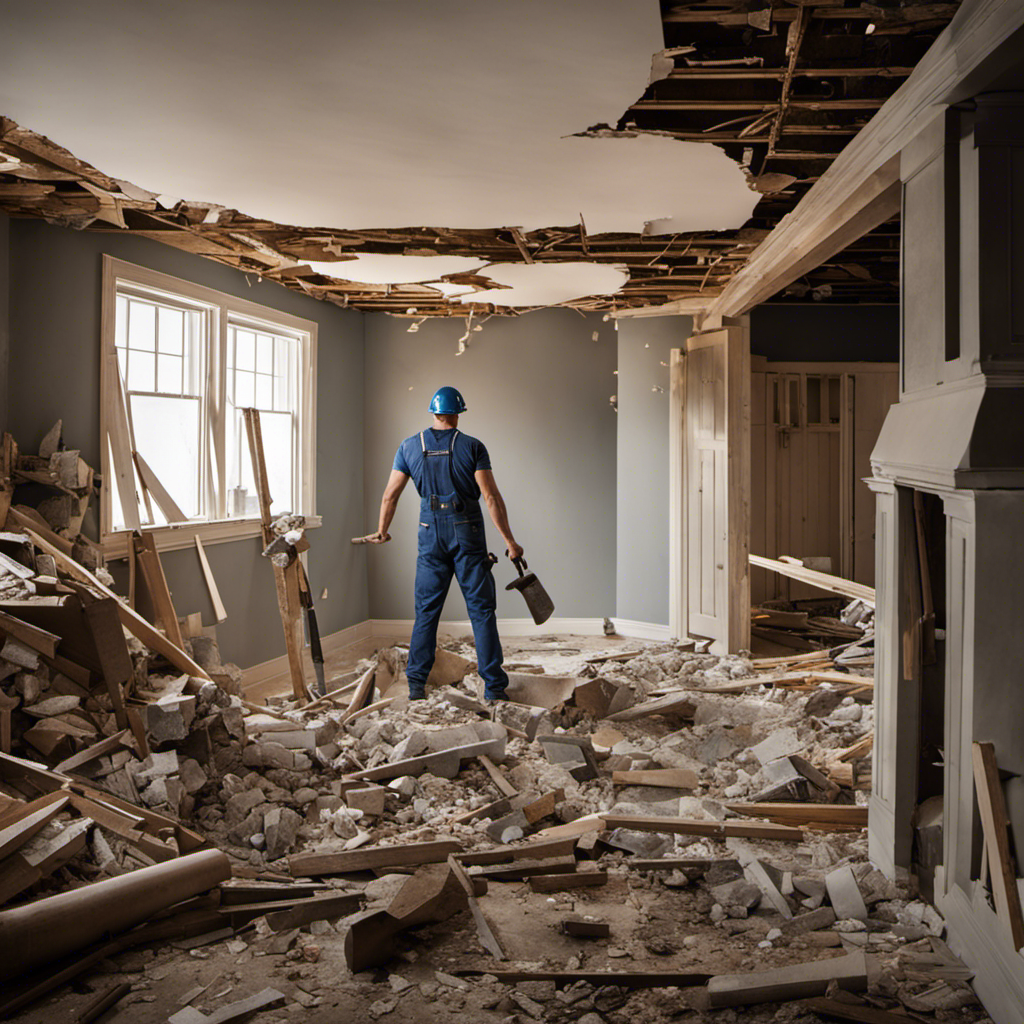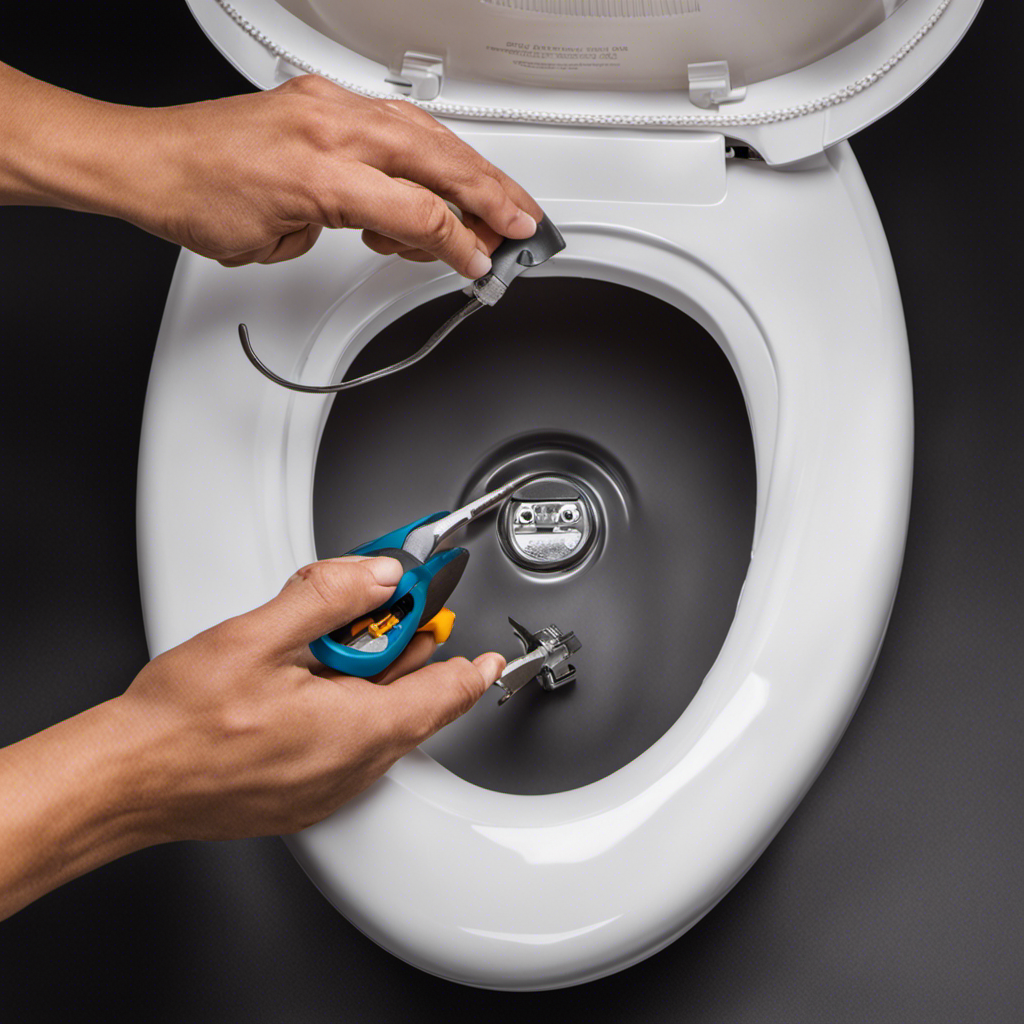I know what you’re thinking – unclogging a full toilet can be a messy and unpleasant task. But fear not! With the right equipment and techniques, you can tackle this challenge like a pro.
In this article, I will guide you through the step-by-step process of unclogging a full toilet. Whether you’re dealing with a minor clog or a stubborn one, I’ve got you covered.
So let’s roll up our sleeves and get that toilet back in working order!
Key Takeaways
- A plunger and bucket are essential tools for unclogging a full toilet.
- Assess the severity of the clog by observing the water level in the bowl and any signs of slow drainage or gurgling noises.
- Follow basic plunging techniques such as creating suction with a plunger and repeating the process until the water starts to drain freely.
- If the clog persists, try alternative methods such as using a toilet snake, vinegar and baking soda, or hot water flushing. If all else fails, call a professional plumber.
Equipment and Supplies Needed
To unclog a full toilet, you’ll need a plunger and a bucket. These are essential tools that every homeowner should have on hand for such emergencies.
The plunger is used to create suction and dislodge the blockage in the toilet drain. Make sure to choose a plunger with a flange, as it provides a better seal. Additionally, it’s important to wear rubber gloves to protect your hands from any potential mess.
In some cases, a plunger may not be enough to clear the clog. That’s where a toilet auger comes in handy. This tool is designed to break through stubborn clogs by rotating a flexible cable into the drain.
With these equipment and supplies ready, let’s now assess the severity of the clog.
Assessing the Severity of the Clog
Check how severe the blockage is by observing the water level in the bowl. This is the first step in determining the location of the blockage and assessing the severity of the clog.
If the water level is high, close to the brim of the bowl, it indicates a more severe clog. On the other hand, if the water level is low or normal, it may suggest a partial blockage.
Additionally, look out for signs such as slow drainage or gurgling noises when flushing, as these can also indicate a severe clog.
Identifying these signs will help you determine the best course of action to take in unclogging the toilet.
Now, let’s move on to the next section and learn some basic plunging techniques.
Basic Plunging Techniques
Now, let’s see how you can effectively use a plunger to clear the blockage in your toilet. Basic plunging techniques are essential for troubleshooting common toilet issues. By following these steps, you can quickly resolve clogging problems without the need for professional assistance.
First, position the plunger over the drain hole, ensuring a tight seal. Use a firm, downward motion to create suction and dislodge the blockage. Maintain a steady rhythm, pushing and pulling the plunger vigorously for about 20 seconds. Repeat this process several times until the water starts to drain freely.
To help you better understand the process, here is a table summarizing the basic plunging techniques:
| Step | Technique |
|---|---|
| 1 | Position the plunger over the drain hole |
| 2 | Create suction with a firm, downward motion |
| 3 | Push and pull the plunger vigorously for 20 seconds |
Alternative Methods for Stubborn Clogs
If you’re having trouble clearing a stubborn clog in your toilet, there are alternative methods you can try. Sometimes, basic plunging techniques may not be enough to unclog a full toilet. Here are a few alternative methods that you can consider:
-
Toilet Snake: A toilet snake, also known as a drain auger, is a long, flexible tool that can help dislodge clogs deep within the toilet drain. Insert the snake into the drain and twist it clockwise to break up the clog.
-
Vinegar and Baking Soda Method: This method involves pouring a mixture of vinegar and baking soda into the toilet bowl. The chemical reaction between the two ingredients creates a fizzy foam that can help break down the clog. Leave the mixture to work for a few hours before flushing the toilet.
-
Hot Water Flushing: Boil a large pot of water and carefully pour it into the toilet bowl. The hot water can help dissolve the clog and push it through the pipes. Repeat this process a few times if necessary.
These alternative methods can be effective in unclogging stubborn toilets. However, if the clog persists, it may be best to call a professional plumber for assistance.
Preventing Future Toilet Clogs
To prevent future clogs, you should be mindful of what you flush down the toilet. Proper toilet maintenance and flushing techniques are crucial for keeping your plumbing system running smoothly. Here are some tips to help you avoid future clogs:
-
Only flush toilet paper: Flushing anything else, such as wipes, paper towels, or feminine hygiene products, can lead to clogs.
-
Educate your household: Make sure everyone in your household knows what can and cannot be flushed.
-
Install a trash can: Provide a convenient alternative for disposing of items that should not be flushed.
-
Regularly clean and inspect your toilet: This will help identify any potential issues before they become major clogs.
-
Consider using a toilet paper that is designed to dissolve quickly, reducing the risk of clogs.
By following these simple tips, you can maintain a clog-free toilet and avoid costly plumbing repairs. Don’t let your toilet become a source of frustration, take proactive steps to prevent clogs today.
| Do’s | Don’ts |
|---|---|
| Flush toilet paper only | Don’t flush wipes, paper towels, or feminine hygiene products |
| Educate household members | Don’t assume everyone knows what they can and cannot flush |
| Regularly clean and inspect toilet | Don’t neglect regular maintenance |
| Install a trash can | Don’t rely solely on the toilet for disposal |
| Consider using quick-dissolving toilet paper | Don’t use toilet paper that doesn’t dissolve easily |
Conclusion
In conclusion, unclogging a full toilet may seem like a daunting task, but armed with the right knowledge and techniques, it can be easily accomplished.
By utilizing basic plunging techniques and exploring alternative methods for stubborn clogs, you can swiftly tackle any blockage.
Remember to assess the severity of the clog and gather the necessary equipment and supplies beforehand.
With a little patience and determination, you can transform your clogged toilet into a flowing river of relief.
Happy plunging!










